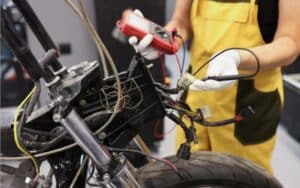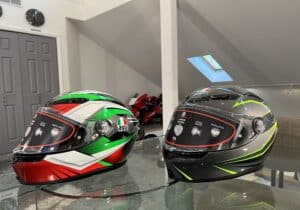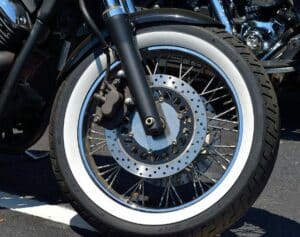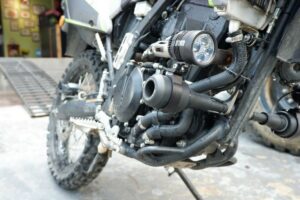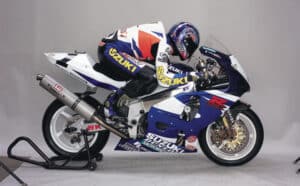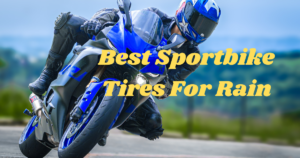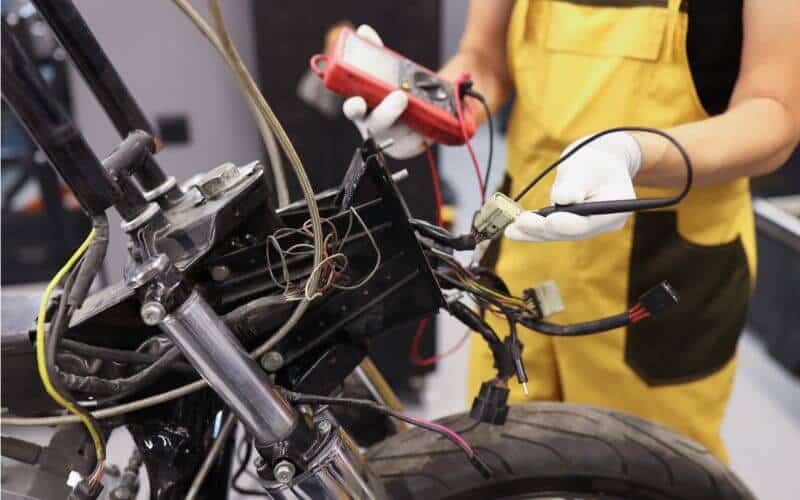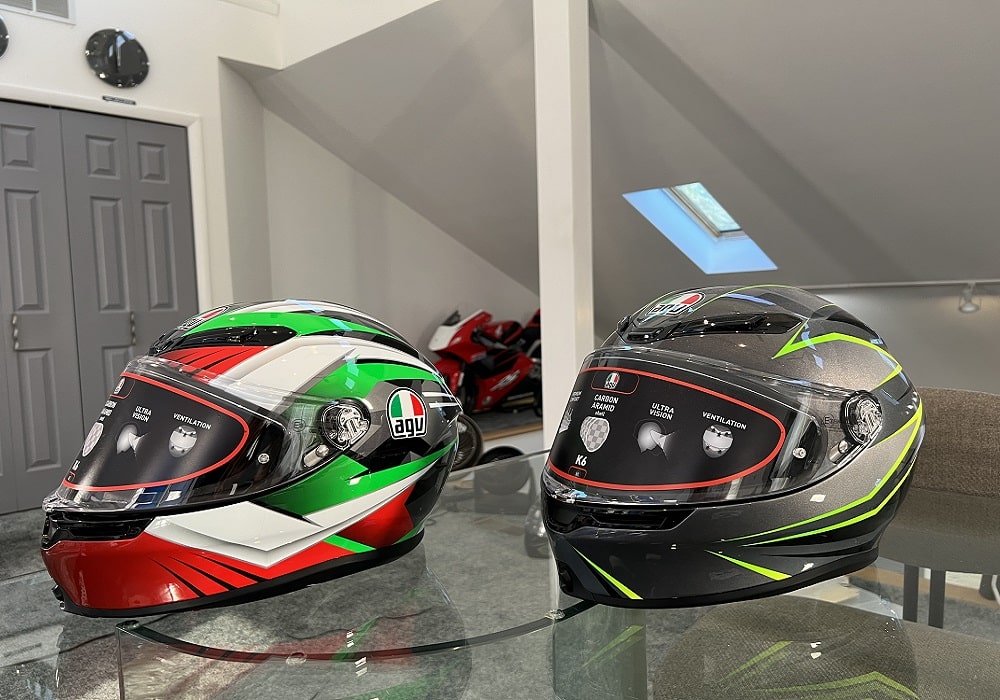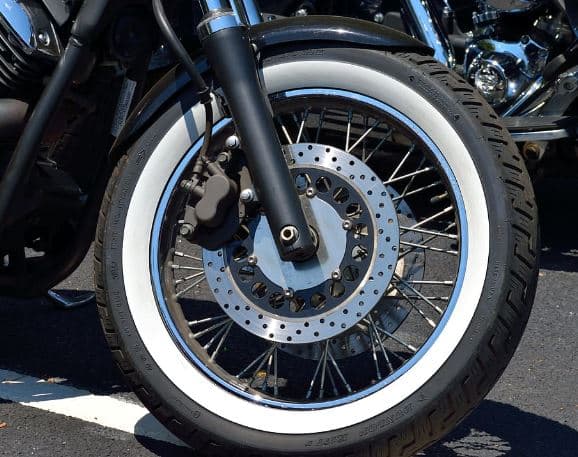According to NHTSA estimates, helmets saved the lives of 1,870 motorcyclists in 2017, and 750 more lives could have been saved in all states if all motorcyclists had worn helmets. Did you know that helmets reduce the risk of death by 37%? A study has also shown that helmets reduce the risk of head injury by 69%.
Full-face motorcycle helmets are safer. They offer the highest level of protection when compared with other types of helmets. Full-face helmets are 45.3% safer than other helmet models.
Motorcycle helmets save lives and reduce the incidence of fatal injuries. For every 100 motorcyclists that die in accidents while not wearing helmets, 37 of them could have survived if all 100 had worn helmets. That said, read on for a detailed insight into what makes full-face helmets safer.
Full-Face Motorcycle Helmets: Are They Safer?
A full-face, full coverage, or Integral helmet as they are called is the safest type of helmet. It’s safer than other models of helmets like half-face helmets, open-face helmets, and modular helmets.
A German researcher, Dietmar Otte, conducted a study in the early 1980s that revealed that full-face helmets are safer than other helmets by 45.3%. His findings were confirmed in 2009 when version 2 of Motorcycle Accidents In-Depth Study (MAIDS) was done.
A full-face or full coverage helmets helmet is the safest choice of the four different motorcycle helmet styles.
A full-face helmet provides the most coverage surrounding your head and facial areas. A full-coverage helmet also protects from inclement weather like rain, and snow and protects from bugs, rocks, and small debris. Which may hit the face shield or chin bar…
What Makes Full-Face Motorcycle Helmets Safer?
-
Chin & Face Protection From Severe Impacts
A full-face helmet is safer because it gives the most protection to your chin and face. It has one-piece construction that surrounds your head, face, and neck. In the event of a crash, a full-face helmet protects your head, neck, and face from severe impacts.
To achieve the highest level of protection for your head and face motorcyclists should always select a full-faced helmet as their preferred style and model.
Full-faced helmets provide motorcyclists the maximum protection of all the styles of helmets available to riders.
Therefore, full-face or full coverage style helmets are often called “integral helmets. This piece of safety gear is formed from a single exterior shell and does not have seams or hinges which are found in modular style helmets.
These seams and hinges that allow the front part of the modular helmet to lift are also the shell’s weakest point.
According to an Australian study, about 50% of impacts during a crash affect the chin. So, beyond head protection (which every type of helmet offers), a full-face helmet has a chin bar to keep your chin and jaw safe.
Dietmar Otte also asserted that the chin bar area encounters a high impact in most motorcycle accidents. According to his research, 34.6% of accidents affected the chin bar area. And 10% more impacts affected the face shield. Full-face helmets have reinforced chin bars and face shields that protect the chin and face, respectively.
-
Full Face Motorcycle Helmets Protect From Wind, Sun, and Rain
A full-face helmet offers full coverage and shields your face from adverse environmental factors. Wind can be a source of discomfort, especially when you’re riding at high speed.
Exposing your face to cold, windy air for an extended period can result in windburn. So, a full-face helmet improves safety by shielding your face from wind disturbances.
Riding with your face exposed to intense sun rays causes discomfort, leading to an ugly riding experience. In extreme cases, skin irritation or sunburns are possible.
Excessive exposure to sun rays leads to vision problems. A full-face helmet offers the most protection from the sun, especially when it comes with a tinted visor.
Riding on a rainy day comes with some challenges. It’s difficult to ride in the rain when your face isn’t fully protected. For instance, putting on a half helmet or an open-face helmet while it’s raining will make your face wet – which is a safety concern.
-
Full Coverage Helmets Provide Protection From Bugs and Debris
A full-face helmet keeps your face from bugs and debris. Riding with an open face increases your exposure to dust, tiny stones, and waste particles suspended in the air. At high speed, stones colliding with your face can cause irritation and injuries. In the same way, taking in too much dust leads to health challenges.
Just like collisions with stones and debris, random insects can turn a supposedly great ride into an ugly one if your face isn’t fully covered. Some bugs bite, cause skin irritation or even crawl into your eyes. All these affect the rider’s safety.
-
Full-Face Helmets Are Less Noisy
It is well known that a single integral, full-face helmet is also quieter than a modular, 3/4 model Jet or half helmet style helmet. Excessive noise while riding can endanger the safe operation of a motorcycle.
It has been established by independent researchers that exposure to 95 decibels or greater for 50 minutes or more can cause permanent hearing loss. Other research has shown that the noise level inside a helmet can exceed 115 decibels when riding at high speed.
So, using a very noisy helmet increases your risk of developing hearing problems. Full-face helmets are quieter than other types of helmets. Consequently, they offer better protection from hearing damage.
Secondly, noisy helmets make hearing traffic sounds, horns, sirens, etc., difficult. Not being conscious of the environment in which you ride is a safety concern. A quiet helmet is necessary for a safe ride. So, the quieter your helmet, the safer.
Full-face Vs. Half Helmet
A Half helmet covers only your head and leaves the side of the head and face open. In contrast, a full-face helmet gives full coverage. Therefore, it’s safer. Due to the design of a half helmet, it’s noisier. A half helmet is more likely to expose you to the harmful effects of excessive noise.
Full-Face Vs. Open-Face Helmet
An open-face helmet covers the head plus the side of the head. It protects you from head impacts. Just like the half helmet, it leaves the face unprotected. When it comes to noise levels, an open-face helmet is louder. So, it offers less protection than the full-face helmet.
Full-Face Vs. Modular Helmet
A modular helmet combines the advantage of full-face and open-face helmets. Unlike half and open-face helmets, a modular helmet covers the entire head and face. It offers additional protection to the face, just like the full-face helmet. However, the full-face helmet is safer.
The chin bar of a modular helmet is not as reinforced as that of a full-face helmet. A modular helmet won’t offer you the same level of protection as the full-face helmet in an accident. It has been shown that during a crash, the flip-up component of a modular helmet can detach, leaving your face exposed.
A full-face helmet has a better aerodynamic design than a modular helmet. Generally, riders experience more wind noise in modular helmets. Full-Face helmets are also safer when it comes to the harmful effects of high levels of noise.
How Do I Choose a Safe Motorcycle Helmet?
1. Consider the Type of Helmet Shell Material
Don’t choose a helmet made with plastic – it isn’t durable. High-end helmets are made with carbon composites and Kevlar. Helmets made with fiber-glass composites are also common.
However, material and manufacturing standards change. Make sure you do in-depth research to find out the current best helmet material.
2. Check the Weight of the Helmet
Light-weight helmets are the best. When choosing a helmet, try on as many as possible. Select a helmet that is light enough to be worn for an extended period.
3. Choose a Helmet with a Moisture Wicking-Absorbing Interior
A safe helmet is a comfortable helmet and should feature an interior with the capacity to absorb and disperse moisture. In addition, it should have high-tech ventilation and sweat-wicking linings to keep the inside neat and dry.
4. Does Your Helmet Fit Properly?
Pick a helmet that perfectly fits your head – wearing a helmet that wobbles up and down endangers safety. Don’t choose a helmet that is too tight on you, either.
5. Check Your Helmet’s Safety Standards
To make sure you’re buying a safe motorcycle helmet, check the safety certifications. There are many types of safety ratings like DOT, ECE, SNELL, and SHARP. These standards ensure that helmets meet some safety conditions.
Before you choose a helmet, check if it has the safety rating needed where you ride. Click here for more details
Final Verdict: What is the Safest Helmet for Motorcycles?
Currently, the safest helmet for a motorcycle is the full-face helmet. It’s the safest because it features one-piece seamless integral shell construction with a chin bar and face shield that protect both the head and face from injuries.
Full-face helmets are also safer when it comes to shielding riders from the effects of excessive wind noise, rain, sleet, snow, and road debris. Other types of helmets are noisier than the full-face. So, full-face helmets are better at protecting riders from hearing loss and noise distractions.
Sources:
- MOTORCYCLE HELMETS
- Motorcycle Safety
- Facts + Statistics: Motorcycle crashes
- Safety in Numbers: Dietmar Otte’s Motorcycle Helmet Impact Diagram
- Loud Noise Can Cause Hearing Loss
About the author: Michael Parrotte was the Vice President of AGV Helmets America, and a consultant for KBC Helmets, Vemar Helmets, Suomy Helmets, Marushin Helmets, KYT Helmets, Sparx Helmets. In addition, he is the founder and owner of AGV Sports Group.








